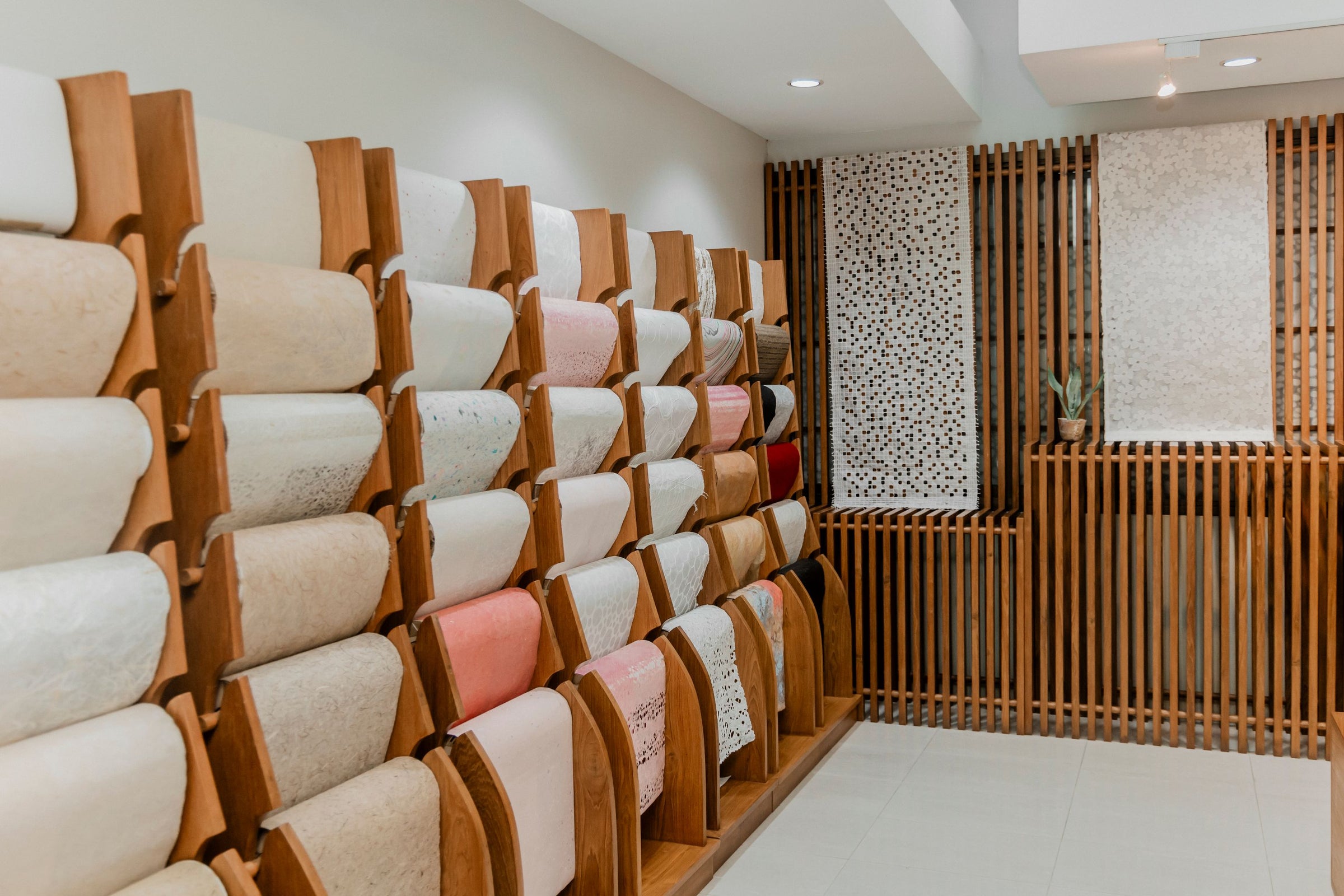Embracing Nature’s Imprint: The Art of EcoPrinting on Mulberry Paper
In the world of sustainable art, EcoPrinting on mulberry paper is not just a technique—it's a poetic expression of nature's endless beauty. This environmentally friendly art form marries the subtleties of organic materials with the robust traditions of paper making, creating pieces that are as unique as they are eco-conscious.

EcoPrint featuring a diverse selection of leaves sourced from around our factory.
What is EcoPrinting?
Eco printing, also known as botanical printing, is a sustainable and environmentally friendly technique that involves transferring the natural pigments and shapes of plants directly onto paper. This process not only captures the beauty of nature in a unique way but also emphasizes the use of non-toxic, natural materials.


Why Mulberry Paper?
Mulberry paper, made from the fibers of the mulberry tree, is highly revered in the art community for its durability and fine texture. It's particularly well-suited for EcoPrinting due to its strong fiber structure, which can withstand the moisture and heat involved in the EcoPrinting process. This paper does not tear easily and holds the botanical dyes well, making it an ideal canvas for nature’s hues.

The Process of EcoPrinting on Mulberry Paper
The magic of EcoPrinting on mulberry paper begins with the selection of foliage. Artists often choose leaves and flowers based on their dye properties and the patterns they can create. At Kozo Studio, we are committed to sourcing the foliage directly from the local flora surrounding our paper mill. This includes an array of plants such as teak, mango, and castor bean plant, among others, ensuring that our materials are as fresh and sustainable as possible.
The chosen materials are arranged on a sheet of mulberry paper that has been treated with a mordant—a substance that helps to fix dyes onto the paper. Mordants can be made from various chemical compounds, typically metal salts. Some of the most commonly used mordants include:
- Alum (potassium aluminum sulfate): One of the most popular mordants due to its safety and effectiveness. It is particularly good for achieving bright and clear colors.
- Iron (ferrous sulfate): Used to darken colors and give shades of grey, black, and brown.
- Copper sulfate: Enhances greens and blues.
- Tannic acid: Derived from plant sources, it can act as a natural mordant and is often used to prepare fibers for dyeing.
The arrangement can be random or meticulously designed, depending on the artist’s vision. Once arranged, the paper is rolled, folded, or covered with another sheet, and the roll or stack is typically steamed or pressed.
Steaming or pressing allows the natural dyes to seep into the paper fibers, creating a permanent bond. After that, the paper must be carefully dried to prevent smudging of the delicate prints. The reveal, when the leaves are peeled away, is often a moment of wonder, showcasing detailed impressions and a rich gradient of colors.

Some green leaves can produce an unexpected but stunning hue even without interaction with mordants.
Environmental Impact
One of the most compelling aspects of EcoPrinting is its minimal environmental footprint. This method uses natural and renewable resources, produces little waste, and avoids the use of synthetic chemicals, making it an excellent choice for eco-minded artists and consumers.
Furthermore, by using mulberry paper, artists support sustainable forestry practices. Mulberry paper is crafted from the bark of the tree, which does not require cutting the tree down. Additionally, paper mulberry trees are fast-growing and require less water and fewer pesticides, making them an eco-friendly resource.

Earthy-toned botanical dye EcoPrint featuring an assortment of leaves.
The Artistic Appeal
Each piece of EcoPrinted mulberry paper tells a story—a narrative of the plant’s life, the season’s character, and the artist’s interaction with nature. These prints are not just artistic expressions but are also a record of ecological beauty, making them profoundly meaningful works of art.
Whether used for fine art, crafts, or even unique stationery, EcoPrinted mulberry paper stands out for its intricate details and the purity of its creation process. It’s a testament to the beauty that can be achieved when we work in harmony with nature.
Conclusion
EcoPrinting on mulberry paper is more than just an art form; it’s a sustainable practice that connects us to the natural world in the most beautiful way. It challenges us to see the value in leaves and flowers not just as fleeting parts of our environment but as vibrant pigments waiting to be transformed into art. Each print, infused with natural patterns, is a reminder of our planet’s beauty and the importance of preserving it.
Whether you are an artist, an environmental advocate, or simply a lover of unique, natural art, exploring the technique of EcoPrinting on mulberry paper is sure to provide an enriching and fulfilling experience.







